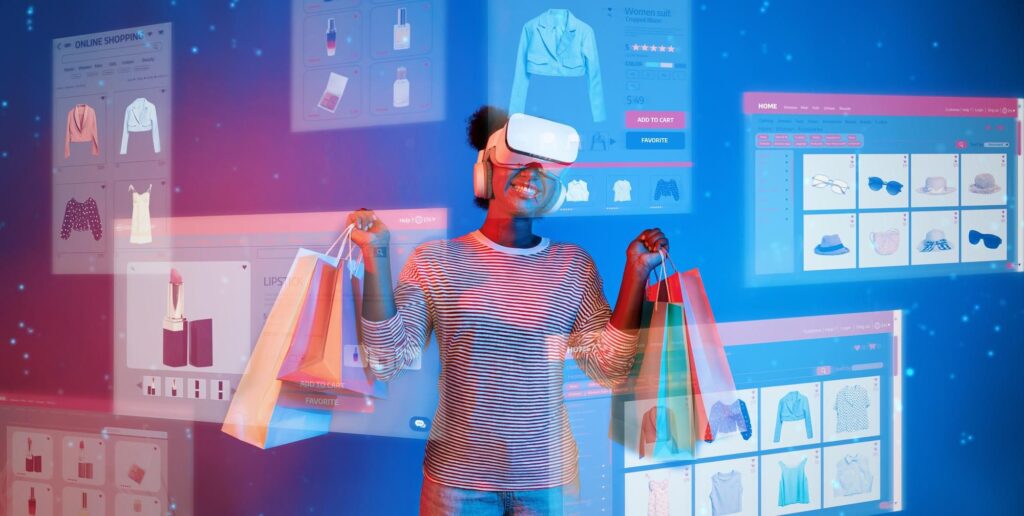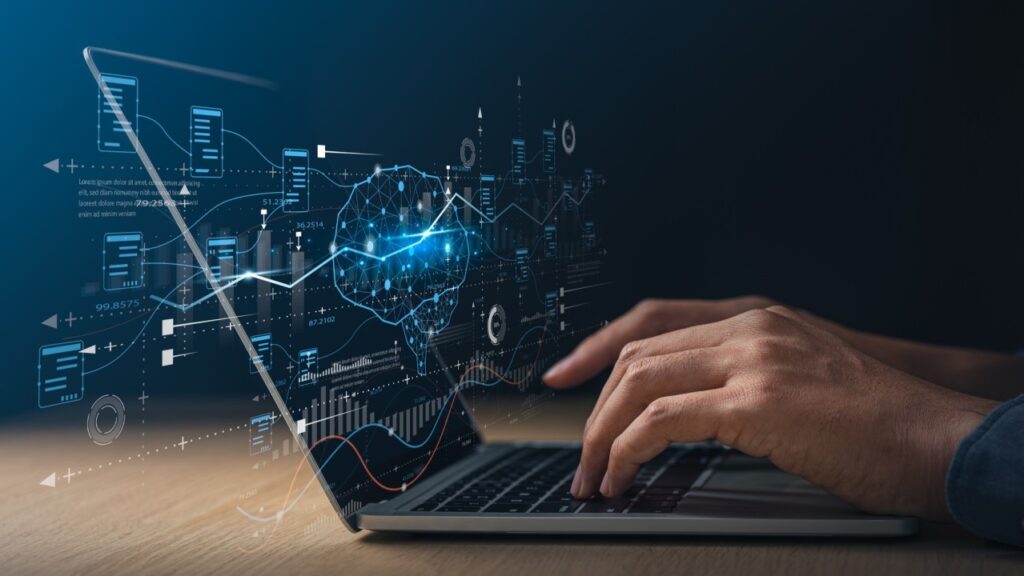Introduction: E-commerce Is Booming — But Also Overwhelming
Modern e-commerce is a beast. With thousands of SKUs, millions of users, and ever-evolving trends, selling online today is about more than having a website and a checkout button. It’s about creating a hyper-personalized journey that keeps shoppers engaged from homepage to purchase—and beyond.
But here’s the catch:
Customers want Amazon-level personalization. And without AI, that’s almost impossible.
Manual merchandising, static pricing, and one-size-fits-all campaigns just don’t cut it anymore. Enter Artificial Intelligence (AI) and Machine Learning (ML) — the secret weapons of high-performing e-commerce brands.
The AI Tech Stack Fueling Modern E-commerce
Let’s break down the key AI-driven systems that are changing the game:
🧠 1. Recommendation Engines: Your Personal Online Salesperson
One of the most visible and impactful uses of AI in e-commerce is the recommendation engine.
- These systems analyze browsing behaviour, past purchases, product ratings, and even what other users with similar profiles viewed.
- Using collaborative filtering and deep learning, they suggest products that customers are most likely to engage with or buy.
Think of it as having a digital salesperson who knows your taste better than your best friend.
Use Case Example:
- “Customers who bought this also bought…” or “You might also like…” aren’t just random — they’re real-time AI predictions.
- Netflix uses similar tech for content. Amazon uses it for everything—from books to batteries.
Stat: Recommendation engines account for 35% of Amazon’s total revenue.
💸 2. Dynamic Pricing: AI-Driven Profit Optimization
Gone are the days of fixed pricing. With AI, pricing can now:
- Adjust in real time based on supply, demand, customer segment, competitor pricing, and seasonality.
- Run A/B tests on pricing models automatically and optimize for conversions or profit margins.
This is called dynamic pricing, and it’s powered by reinforcement learning and demand forecasting models.
Example:
Uber’s surge pricing, hotel room rates that change daily, and product discounts that fluctuate based on user behavior—all are examples of dynamic pricing.
Impact: Dynamic pricing can increase revenue per visitor by up to 25% with smart adjustments.
📦 3. Inventory Forecasting: Stop Stockouts and Overstocking
Nothing kills sales faster than these two nightmares:
- A customer loves a product… but it’s out of stock.
- You stock too much of something… and it gathers dust in your warehouse.
AI helps solve both through predictive analytics.
- It forecasts demand by analyzing historical sales, seasonality, market trends, and external factors (like weather, holidays, or social trends).
- AI also helps optimize fulfillment routes and warehouse operations.
Example: Shopify plugins and enterprise tools like Blue Yonder or Oracle Retail AI forecast demand with astonishing accuracy, helping brands reduce waste and keep their shelves (virtual and physical) well-balanced.
Real-World Example: Amazon and Shopify’s AI-Driven Domination
📦 Amazon: AI at the Core
Amazon doesn’t just use AI — it’s built on it. Here’s how:
- Product Discovery: Their AI suggests the right products on the homepage, search results, and email campaigns.
- Logistics Optimization: AI routes packages via the fastest fulfillment centers using real-time data.
- Voice Commerce: Alexa is powered by natural language processing to enable voice-based shopping.
- Personalized Promotions: Amazon tailors discounts to users based on their likelihood to purchase.
The result? A buying experience so smooth that users often forget they’re interacting with AI.
🛍 Shopify: Plug-and-Play AI for Smaller Brands
Shopify has introduced AI tools that empower smaller merchants with enterprise-grade tech:
- Shopify Magic: AI copywriting tool for product descriptions and emails.
- Shopify Flow: Workflow automation for inventory alerts and customer segmentation.
- 3rd-Party Apps: There are dozens of AI-based recommendation, review analysis, and chat apps available in the Shopify App Store.
Even a one-person store can now personalize like a giant.
The Impact: More Sales, Happier Shoppers, Smarter Businesses
Let’s look at the real-world benefits brands are seeing:
| Metric | Before AI | After AI Integration |
|---|---|---|
| Conversion Rate | 1.2% – 2% avg | 3.5% – 5% with AI tools |
| Average Order Value (AOV) | $45 | $60+ with upselling AI |
| Cart Abandonment Recovery | ~10% manual follow-up | 25%+ with AI-triggered flows |
| Inventory Holding Costs | High due to overstocking | Reduced by predictive stocking |
| Customer Satisfaction (CSAT) | 70% avg | 85%+ with tailored experiences |
Final Thoughts: AI Is Not the Future — It’s the Now
AI isn’t a luxury anymore—it’s the backbone of scalable, profitable e-commerce.
If your online store isn’t using AI to personalize experiences, optimize prices, or streamline logistics, you’re not just missing out—you’re falling behind.
Start small:
- Add a product recommendation app.
- Experiment with dynamic pricing tools.
- Use Shopify’s AI-powered tools for automation.
Then scale up as you grow. Because when it comes to e-commerce success in 2025, AI is your most valuable employee.





